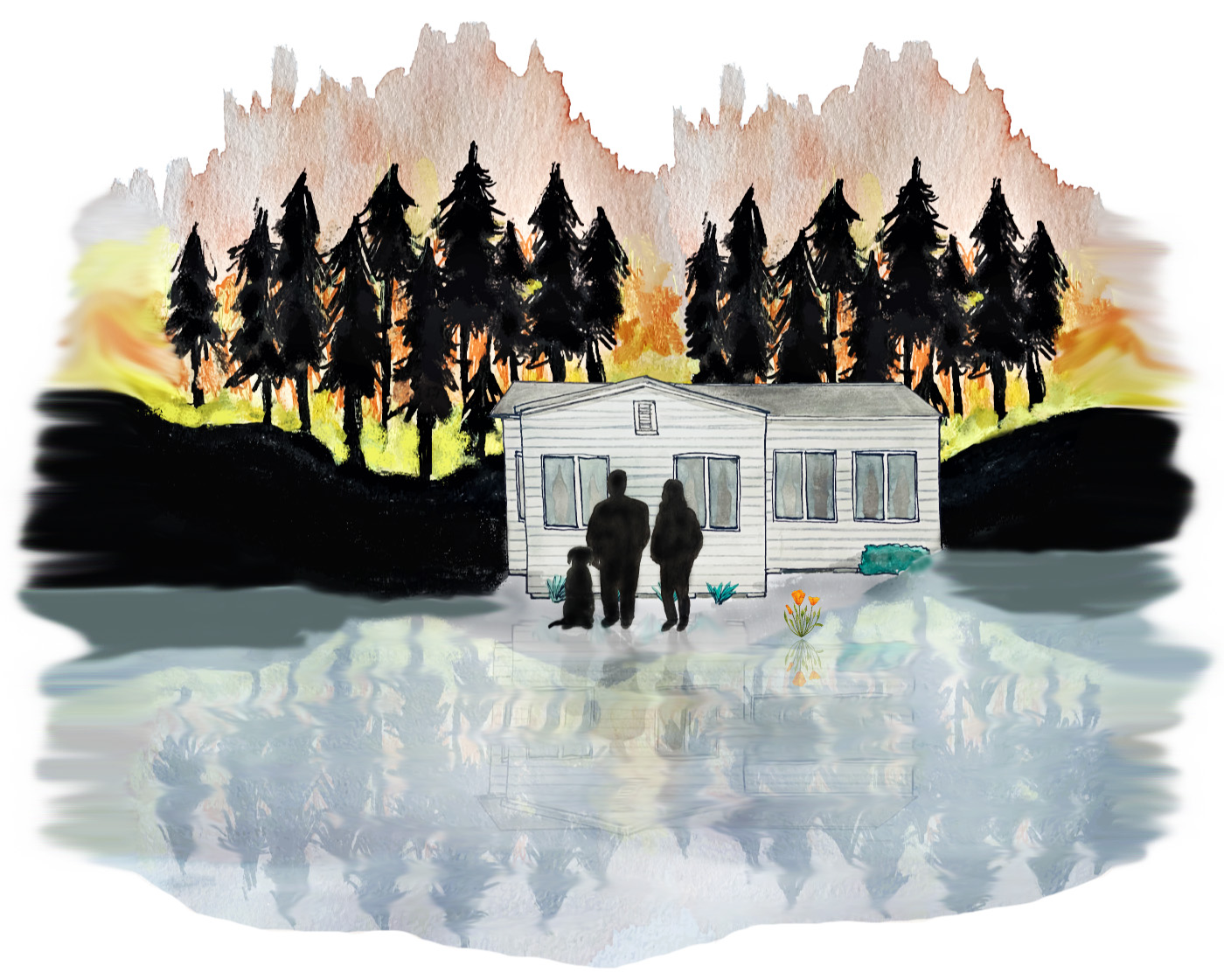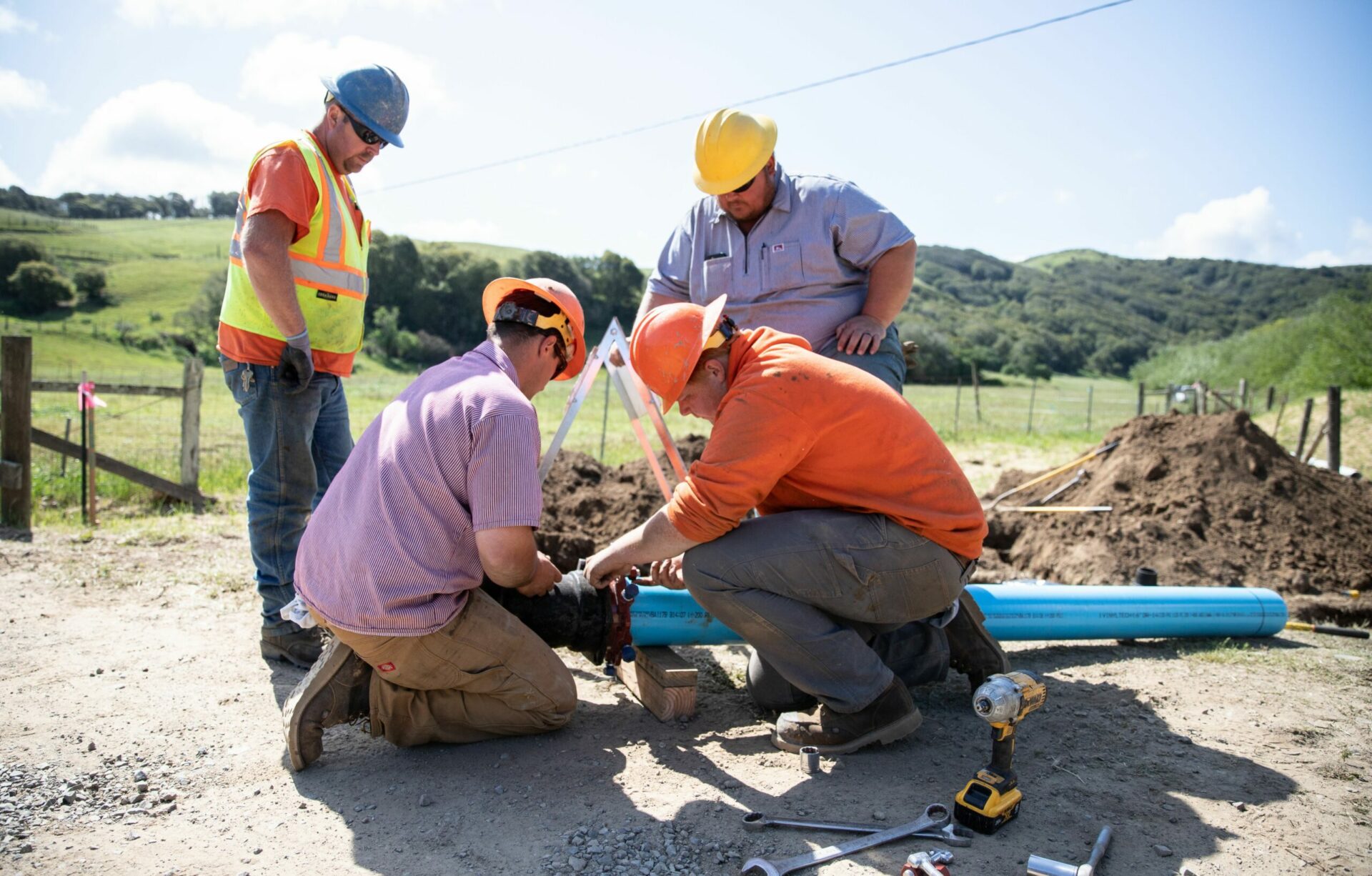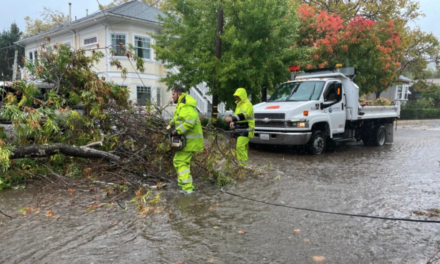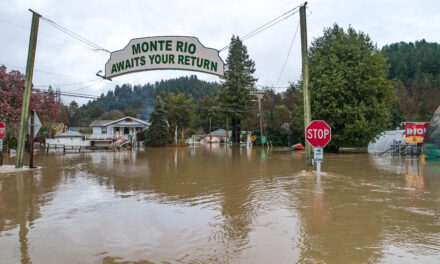SPECIAL SERIES
Extremes-in-3D

Severe drought, high winds, catastrophic wildfires, rivers of rain, mudslides, bomb cyclones—national studies show California experienced the most disasters of any state in the last decade. Many of these extremes are caused by complex cascades of climate change-driven events, and each affects specific communities and people in ways unique to their locale and ability to adapt and rebound. This special KneeDeep Times investigative series explores fire, flood, heat, and other extremes in three dimensions—science, people, place—and reports on how researchers, activists, city planners, and community leaders throughout the state are building climate adaptation and resilience.
Image: Vrinda Manglik.
Beyond the cool, hilly cities and forests of the coast that dominate popular views of California sprawl the warm, wide, deeply-soiled valleys of the state’s inland empire. It is here among the walnut trees and lettuce leaves that the US grows more than half its produce. It is here, in smaller rural communities, that climate extremes – from heavier rains to hotter nights to deeper inequities – are felt most immediately. It is also here, in California’s valleys, that farmers, scientists and field workers are testing the limits of local resilience. Not everyone or everything will emerge unscathed.
SCIENCE STORY
PEOPLE STORY
PLACE STORY
EXTREMES-IN-3D
A five-part series of stories in which KneeDeep Times explores the science behind climate extremes in California, and how people and places react and adapt.
Supported by the CO2 Foundation and Pulitzer Center.
With climate extremes now sending us bigger waves and wetter storms and warmer water, California’s coast is changing more than ever. Erosion rates will amp up with the current El Niño, scientists say. Models project that we could lose most of our beloved beaches by 2100 to the advancing ocean. Those living in small coastal towns are already feeling the brunt of the intensifying storms and learning how to rely on their community networks more than outside help. Others have found vocations and passtimes in the coastal zone, monitoring whales, experimenting with nature-based infrastructure, surfing the combers.
SCIENCE STORY
PEOPLE STORY
PLACE STORY
We can flee in the face of flood or fire, but heat creeps up on us. One minute it feels relaxing, then next dizzying. For some there is no switch to flick for the air conditioning, no escape from hot rooms or fields. If you live in a coastal city, your body is less accustomed to heat, making you more vulnerable. For indoor and outdoor workers doing the heavy lifting and picking, state protections are not coming fast enough. For small communities like Oasis in California’s inland valleys, there simply isn’t any shade anywhere to be found. It’s heat, not superstorms or mega-floods, that will kill the most of us, unless we are prepared.
SCIENCE STORY
PEOPLE STORY
PLACE STORY
As both dry seasons and wet seasons become more irregular, Californians have felt the changes in our body memory. Rural and urban communities are rethinking storm preparedness while confronting climate anxiety. Scientists and water managers are revisiting long accepted norms about rainfall, drought, and snowpack. And after years of drought, long-lost, much beloved Tulare Lake is back—along with questions about how to re-imagine the state’s interior landscape.
SCIENCE STORY
PEOPLE STORY
PLACE STORY
A future with fire has settled itself into our very being as Californians. It’s happened enough times, we know the drill. Science is telling us how and when to evacuate, and where to expect mudslides and debris flows from burn scars. Neighbors at the edge of wildlands are sharing the burden of brush clearing and backyard fire safety. Schools in smoke zones are increasingly aware they may be the last healthy refuge for kids already struggling to breathe.
SCIENCE STORY
PEOPLE STORY
PLACE STORY
More stories coming.
EXTREMES-IN-3D
SERIES CREDITS
Managing Editor: Ariel Rubissow Okamoto
Web Story Design: Vanessa Lee & Tony Hale
Science advisors: Alexander Gershunov, Patrick Barnard, Richelle Tanner
Series supported by the CO2 Foundation.









